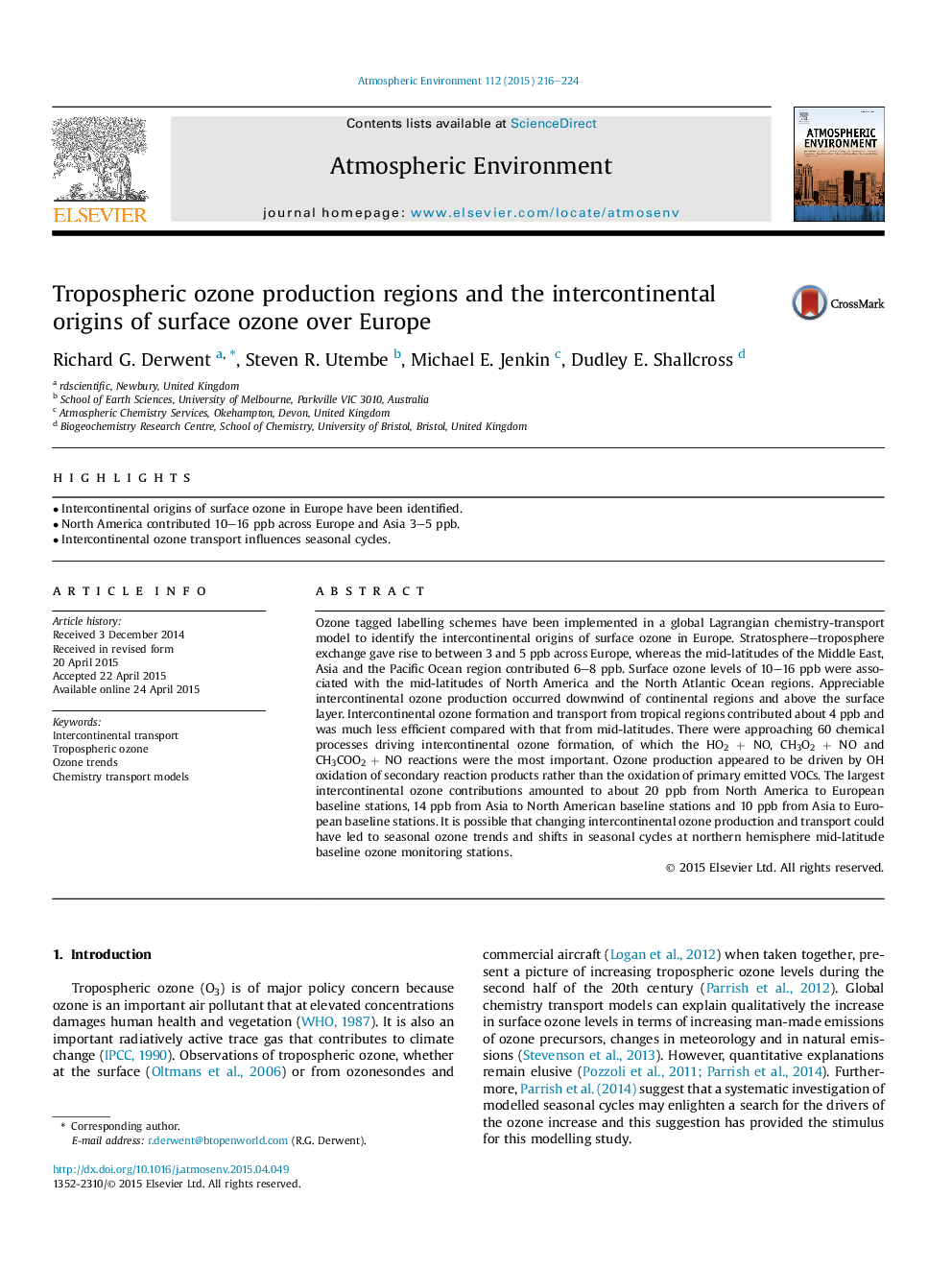| Article ID | Journal | Published Year | Pages | File Type |
|---|---|---|---|---|
| 6338074 | Atmospheric Environment | 2015 | 9 Pages |
Abstract
Ozone tagged labelling schemes have been implemented in a global Lagrangian chemistry-transport model to identify the intercontinental origins of surface ozone in Europe. Stratosphere-troposphere exchange gave rise to between 3 and 5Â ppb across Europe, whereas the mid-latitudes of the Middle East, Asia and the Pacific Ocean region contributed 6-8Â ppb. Surface ozone levels of 10-16Â ppb were associated with the mid-latitudes of North America and the North Atlantic Ocean regions. Appreciable intercontinental ozone production occurred downwind of continental regions and above the surface layer. Intercontinental ozone formation and transport from tropical regions contributed about 4Â ppb and was much less efficient compared with that from mid-latitudes. There were approaching 60 chemical processes driving intercontinental ozone formation, of which the HO2Â +Â NO, CH3O2Â +Â NO and CH3COO2Â +Â NO reactions were the most important. Ozone production appeared to be driven by OH oxidation of secondary reaction products rather than the oxidation of primary emitted VOCs. The largest intercontinental ozone contributions amounted to about 20Â ppb from North America to European baseline stations, 14Â ppb from Asia to North American baseline stations and 10Â ppb from Asia to European baseline stations. It is possible that changing intercontinental ozone production and transport could have led to seasonal ozone trends and shifts in seasonal cycles at northern hemisphere mid-latitude baseline ozone monitoring stations.
Related Topics
Physical Sciences and Engineering
Earth and Planetary Sciences
Atmospheric Science
Authors
Richard G. Derwent, Steven R. Utembe, Michael E. Jenkin, Dudley E. Shallcross,
